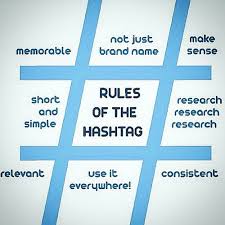When he was watching the 2012 London Olympics, Steven Marx felt disappointed with the television coverage offered by NBC. Since he was an intermittent Twitter user with only about 20 followers at the time, Marx tweeted his frustration and used the hashtag #NBCFail. That single post catapulted Marx to fame and put an unfavorable light on NBC’s coverage of the Olympics as the hashtag went viral. Marx never researched the hashtag and assumed it was already in use, nor did he deliberately use the hashtag to become famous. However, the action proved the power of using the right hashtag.
So, what exactly is a hashtag? A hashtag is simply a phrase or keyword, preceded by the pound sign (#), that is used to create a thread of conversations around a specific topic. Basically, it creates a category to bring ideas together.
Recently, we had a rather high-profile standoff at a planned parenthood office in Colorado Springs. Since the standoff was located right next to the apartment complex where my in-laws lived, I was eager to know what was happening in real-time. I opened Twitter, saw a trending hashtag about the shooting, clicked on the hashtag, and was able to get first-hand accounts of what was going on. Dozens of bystanders, public officials, and the media (none of which I knew) contributed a near-constant stream of comments.
How do you learn about the popularity of a particular hashtag?
Hashtags.org and RiteTag,com are good sources to start with. You can enter a hashtag into the search field and see lots of useful information. At Hashtag.org, you not only discover the number of tweets per hour that contain the hashtag but also the definition of the hashtag. At Hashtagify.me, you can see trends going back 8 weeks, the top days and hours a hashtag is used, and even its spelling variations. Both of these websites provide information on the top users of the hashtags.
How do you create a new hashtag?
If you enter a hashtag into the search field on hashtags.org and there isn’t a definition, you can simply create a definition. You will need to set up a free account if you have not already done so. There are also upgrades you can purchase for power users and social media companies. If you find that there is already a definition for your proposed hashtag and you want your own unique one, you can always add the year to the end or add another word to make it unique.
What do you have to do to make your hashtag catch on?
To encourage people to adopt a hashtag, your audience must be able to relate to it. #NBCFail worked because it captured the sentiment of a wide audience. Also, it must be short, easy to spell, and simple to remember.
How can you use hashtags more effectively in your business?












